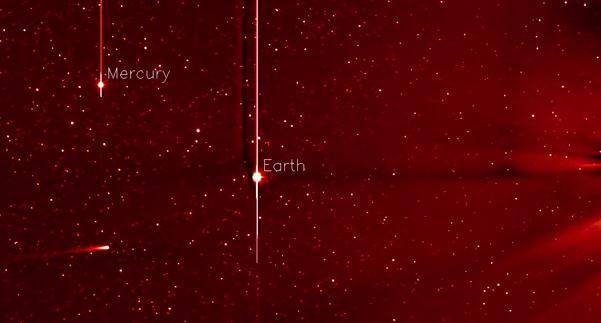Comet ISON is skyrocketing toward the sun and the latest news is about whether the comet will survive its encounter.
The comet is slated to pass near the sun on Thanksgiving (November 28). And experts don’t know what’s going to happen.
“Remember: Comet ISON is a dynamically new sungrazing comet, fresh in from the Oort Cloud, and the last time we saw an object like this was never!” said Karl Battams, a comet scientist with the U.S. Naval Research Laboratory in Washington, D.C. in a blog post on NASA’s Comet ISON Observing Campaign website.
“Furthermore, a sungrazing comet just three days from perihelion has never been studied in this kind o
f detail - we’re breaking new ground here! When we factor in your standard “comets are unpredictable” disclaimer, what we have is a huge recipe for the unknown."
The comet will fly within 684,000 miles of the sun on Thanksgiving.
That’s a little less than two and a half times the distance from Earth to the moon, according to National Geographic.

(NASA)
There are benefits for both scenarios--the comet breaking up and the comet surviving the encounter.
“Depending on the nature of the disintegration, the brightness of the inner coma might spike briefly then fade rapidly, or it might just gradually decrease in brightness. Since ISON is currently being observed by a tremendous variety of telescopes on Earth and around the solar system, this would be the best-observed case of cometary disruption in history and would likely contribute vast new information about how comets die,” wrote Matthew Knight on NASA’s blog.
“While it would be extremely disappointing to miss out on a potential naked-eye comet, the scientific return from a disintegration would be phenomenal as we will be able to learn a lot about how the comet is put together. This is particularly interesting because the formation and construction of comets is still one of the major mysteries concerning how the planets in the solar system were built.”
Knight says that if the comet does survive the encounter, it would likely lose enough dust during the encounter to produce “a really nice tail.”
“In a realistic best case scenario the tail would stretch for tens of degrees and light up the early morning sky like comet C/2006 P1 McNaught in 2007 ,” he said. “In a ‘pie in the sky’ scenario, we might be dazzled with a tail spanning half the sky and a coma that remained visible for months, like the sungrazing comet of 1680 (pictured at far right). The best of all possible worlds for everyone would be if ISON broke up just a bit, say into a few large pieces, enough to throw out extra material that will make the comet really bright from the ground, while giving astronomers pieces of a comet to study for months and months.”
At this point, the comet is visible from many areas to the naked eye.





